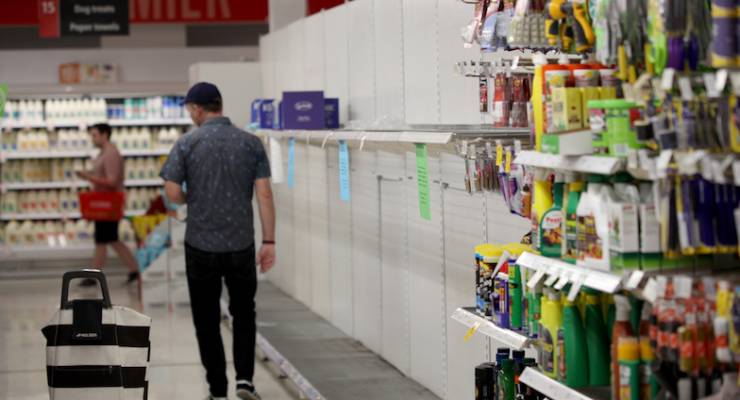
COVID-19 is the news story of our time. But is daily news journalism still fit for purpose in face of this crisis in a world of information abundance?
At one point the traditional media was both the source and channel for breaking news. Now, for news about COVID-19, the key sources are the big public health institutions — often governmental — both here and overseas. Social media and search engines give everyone the direct access that, once, only journalists enjoyed.
Media has become just one more secondhand source — and one of the least trusted.
It’s not that journalists are doing a bad job. Far from it. It’s more a question of whether we’re actually helping. Are we making things worse?
As the tech bible Wired advised its readers on the weekend: “limit how much information you consume about the coronavirus outbreak. Try to find a balance between being informed enough to make decisions about your life, but not so overloaded with information that it becomes stressful”.
It’s good advice. But the silicon chip inside the media’s head is switched to overload as default. For the industry, more is always better. The bigger an event, surely the more stories it needs. Our audiences want it. Let’s keep feeding the demand.
But, unlike toilet rolls, there’s no shortage of supply.
Broadcast and digital media needs all the COVID-19 news that fits — whether that’s politics (what’s the government response?), or finance (what’s happening on the ASX?), celebrities (who’s infected today?) and even sport (will the footy continue?). It’s all COVID-19, all the time.
Any day now it will be: “today’s weather: infection risk — high”.
The amped up competitive demands of the attention economy encourages journalists to push any story to its implicit exclamation mark. Take the smallest of examples: last Friday, Australia hit 198 cases.
This was reported almost universally as “nearly 200” or, even, “about 200” Not wrong, of course. Quibbling, perhaps. But a hardened reporting of the actual figure is both more accurate and shorter (in text, at least). (Today, it is almost 300, by the way.)
This approach is common in commentary. Any expert (or non-expert for that matter) will usually get a better welcome if they’re feeding the crisis beast, than if they’re trying to bring some nuance. As hot takes have replaced thoughtful commentary, it seems that some people won’t be happy until the police are patrolling the streets in haz-mat suits, welding people shut inside their homes.
This behaviour is shaped by the US: politicised institutions with Trumpian bragging and gas-lighting, filtered through a supportive Fox News. There’s early suggestions that COVID-19 is bringing US journalism to breaking point. Ingrained distrust could lead to a collective repudiation of anything the government says and a collapse in confidence that the government can or will make things right.
Although there are strong reasons to distrust the humbug and the bullshit of the Morrison government, Australia hasn’t seen this breakdown of the organised network of trust and confidence that a modern society needs right now.
The media places perhaps too much confidence in journalistic practice to work through this default setting: that traditional conceit that a journalist can get up in the morning, knowing nothing about a subject, then, using query and research skills, file at the end of the day as an expert.
It’s a fantastic skill. It worked well when journalism controlled the distribution channels. It’s still impressive to see it in practice. But it doesn’t meet the needs of now.
As commercial media has slashed journalist numbers, this expertise has pooled in just a few places: the ABC in traditional media, specialist health sites like Croakey and overseas sites like China’s Caixin, The Washington Post (who first broke the COVID-19 story in the West in early January) and The New York Times.
The crisis demonstrates that society needs a journalism of expert restraint; a journalism that’s built on a deep expertise and provides analysis, informed advice, and perhaps some early sketching of the future we can expect.
That’s sadly not the journalism we have right now.








Crikey is committed to hosting lively discussions. Help us keep the conversation useful, interesting and welcoming. We aim to publish comments quickly in the interest of promoting robust conversation, but we’re a small team and we deploy filters to protect against legal risk. Occasionally your comment may be held up while we review, but we’re working as fast as we can to keep the conversation rolling.
The Crikey comment section is members-only content. Please subscribe to leave a comment.
The Crikey comment section is members-only content. Please login to leave a comment.